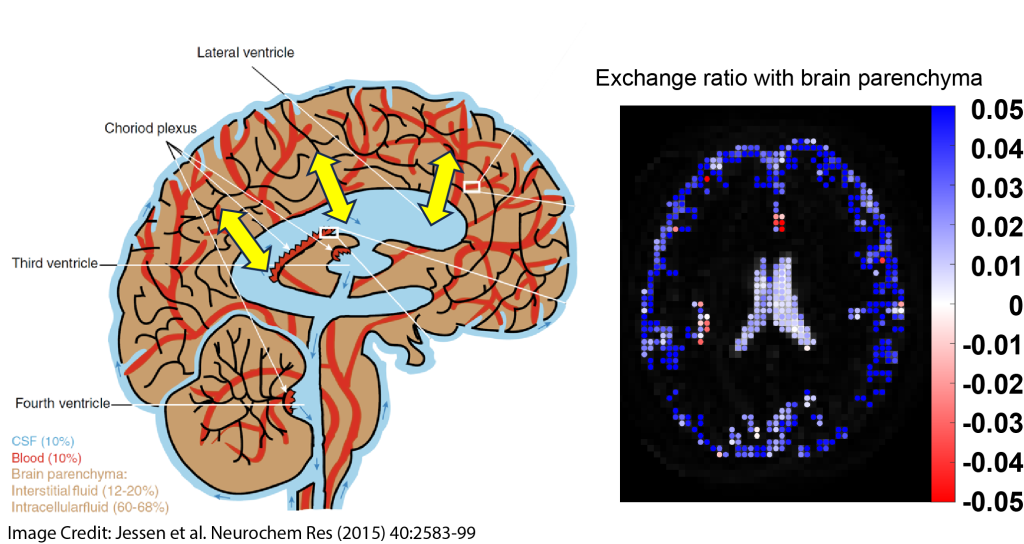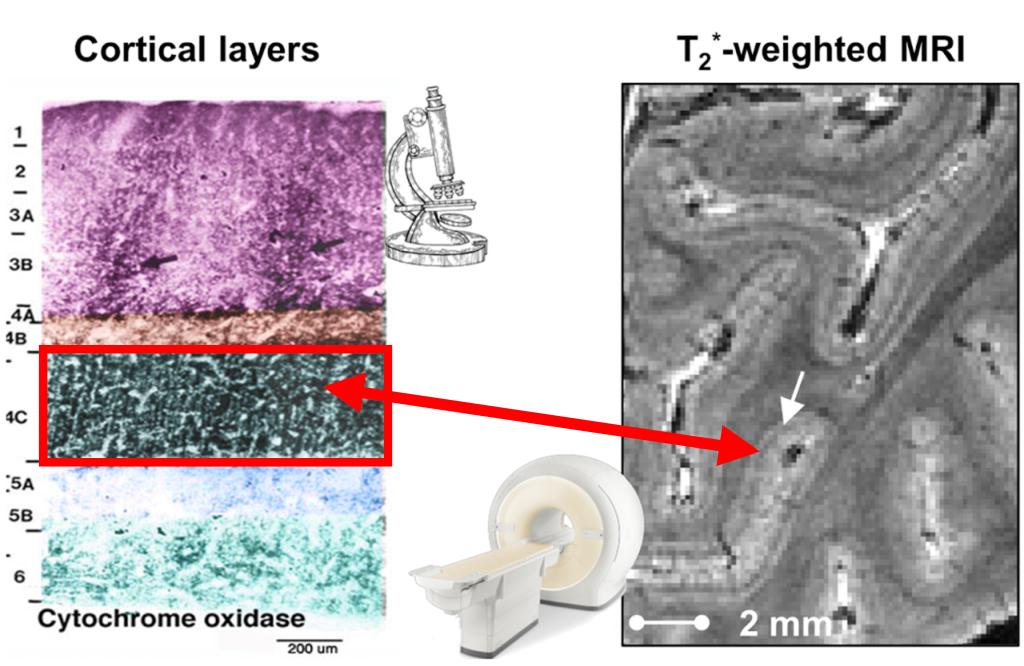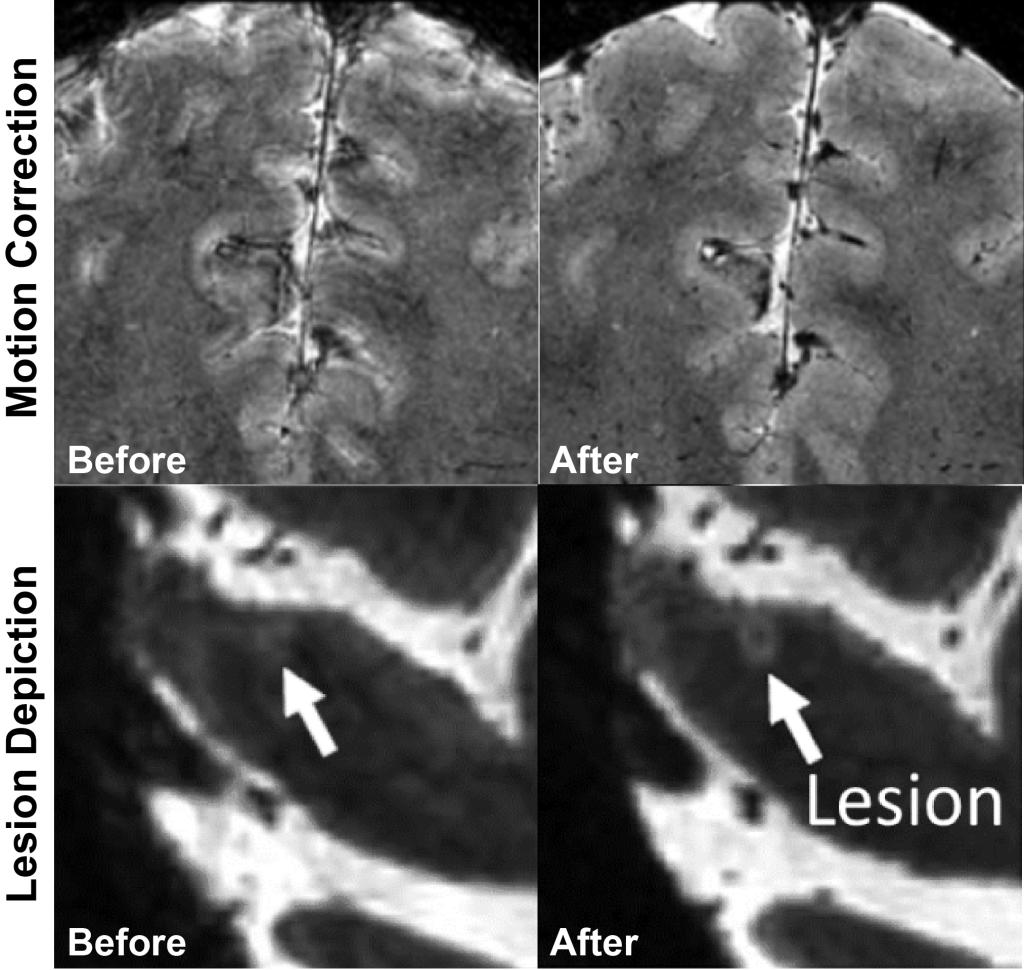Imaging the neurofluid and glymphatic system
The glymphatic system, including cerebrospinal fluid (CSF), plays a vital role in clearing metabolic waste from the brain tissue. While disruption of the CSF exchange with brain tissue has been linked to cognitive decline, probing such exchange in humans remains challenging and largely unstudied. By developing an ingenious MR pulse sequence optimized for measuring the CSF-tissue exchange, our lab is actively discovering new findings in young and elder populations, including age-related biomarkers of declining glymphatic clearance. (Kim et al., NeuroImage 2025)

In vivo histology using high resolution MRI
We develop MRI data acquisition and reconstruction strategies for the purpose of using MRI as a noninvasive in vivo histology tool. With higher field strength, signal and contrast level, mesoscale resolution on the order of 0.5 mm brings us unprecedented details about tissue structure. This holds promises to detect subtle lesions in the early stage of diseases which are not available in the standard clinical practice.

Clinical translation
We are dedicated to the clinical translation of the most advanced imaging technologies.
- At high resolution and high field, MRI is more sensitive to the adverse effect of patient motion. Recently, we developed a robust MRI sequence that simultaneously corrects for head motion and motion-induced B0 changes (Liu et al., Neuroimage, 2019). When used in patients with multiple sclerosis, the technique showed doubled sensitivity to detect small cortical lesions (Liu et al., Investigative Radiology, 2021).
- We evaluated the viability of utilizing faster MRI sequence as an alternative for the conventional acquisition method. Results showed that this approach reduces scan time while preserving high reliability and accuracy comparable to conventional MRI sequence (Huang et al., MRM, 2023).
